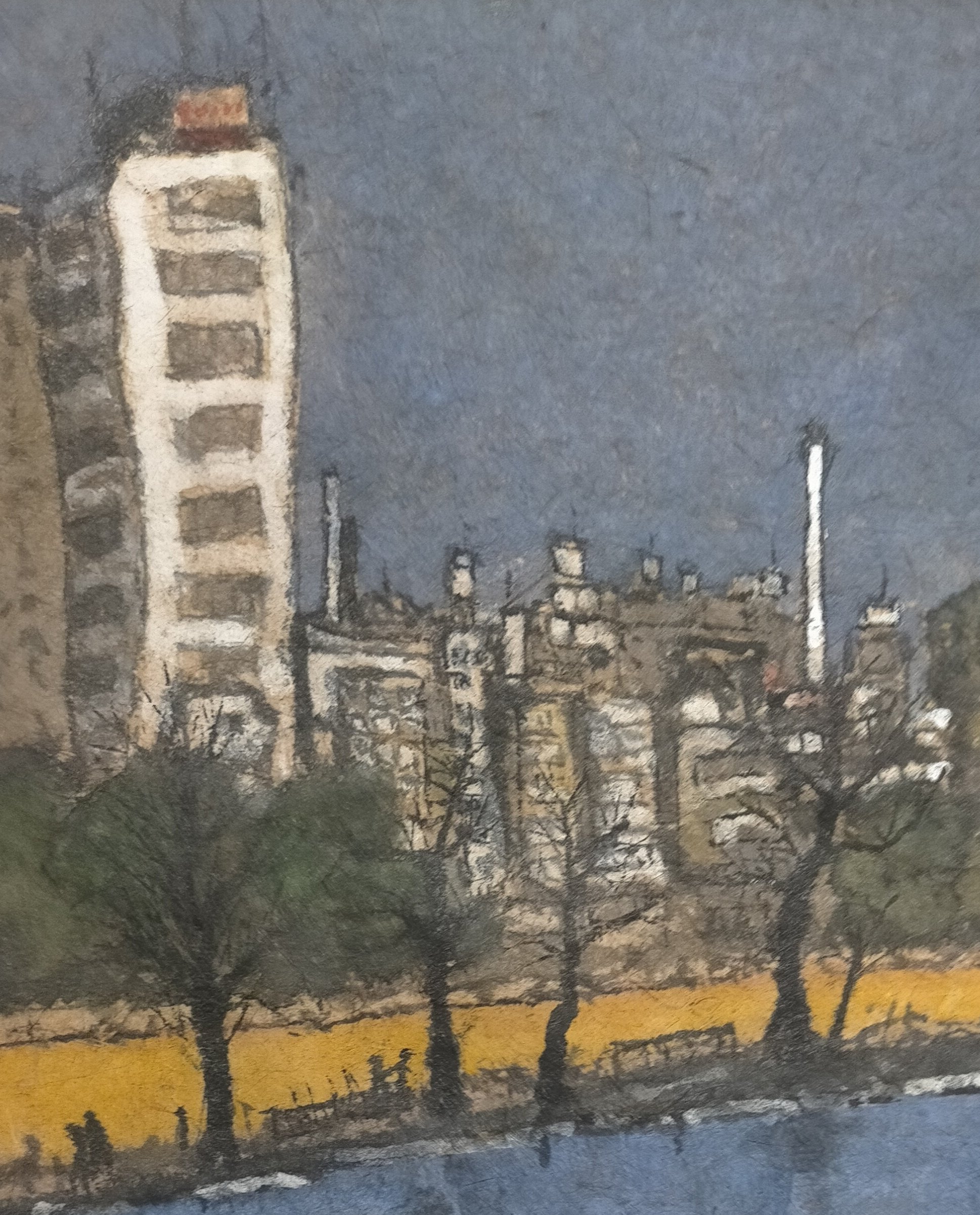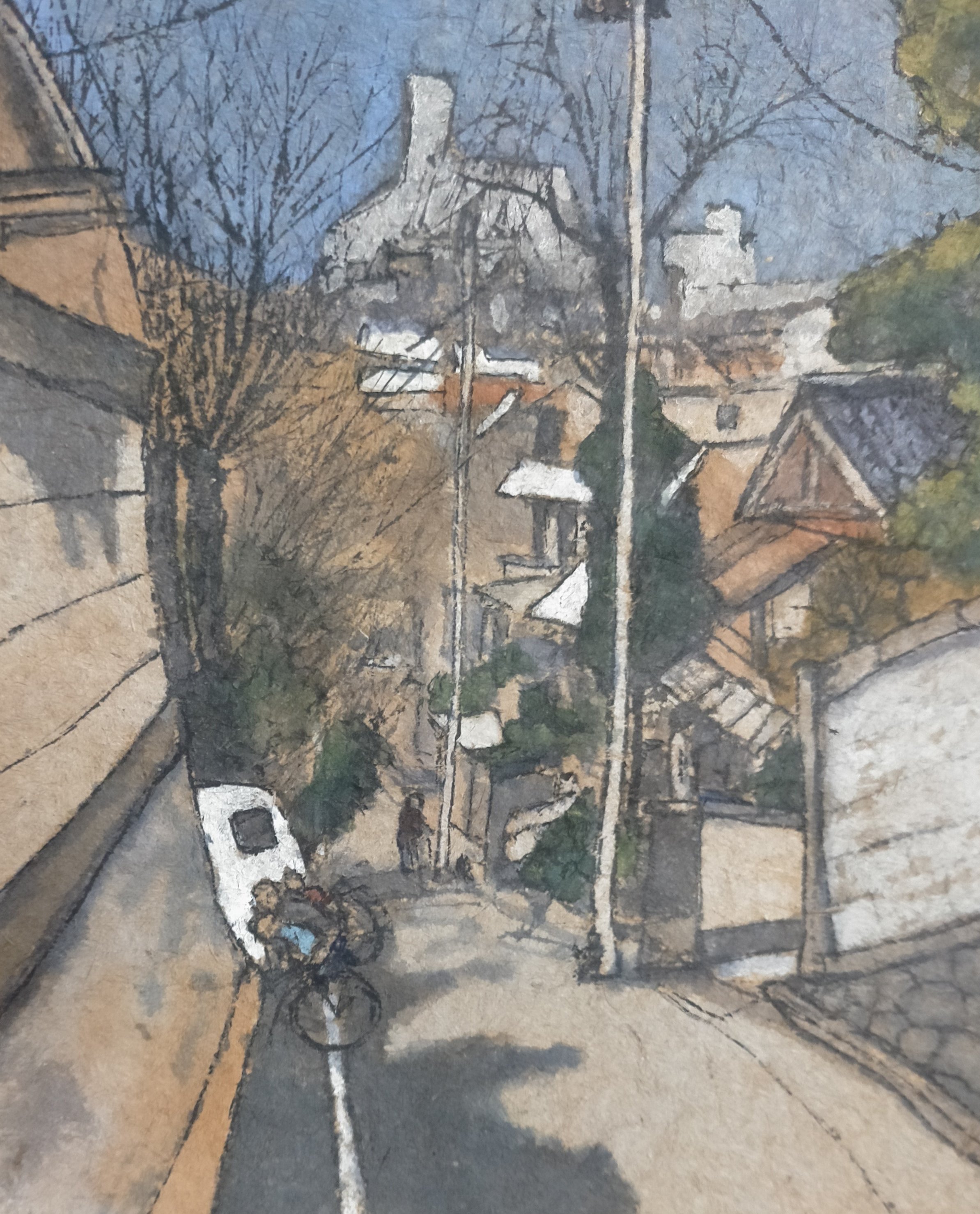I admit having trouble with, “Nihonga,” Japanese painting.
I understand that things got crazy in the Meiji Era with the trendy new oil painting and western perspective invading Japan along with all the other imported technology. Perhaps something had to be done, a line in the sand. Local art and culture should certainly be preserved.
But the construct of Nihonga has become more abstract and stranger over the years. Students at the art universities in the Nihonga department will often make the same sort of image as the foreign art department students. The only real difference is in the materials. Nihonga professors defend Nihonga materials as though they were a new religion.
Nikawa, animal glue, as a binder is mixed, usually by hand, with pigments, to make a tempera paint. Nothing about these materials is unique to Japan.
Isn’t any painting made by a Japanese artist Japanese art?
That being said, this year I have been quite enjoying gofun, a white pigment that is central to the religion of Nihonga. Gofun is a calcium carbonate, white made from oyster shells and it works very differently from either zinc or titanium whites. I’m thinking it even works differently from chalk white, also calcium carbonate, with different micro-nutrients involved.

